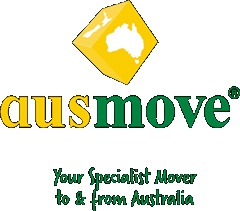Australia is an amazing country, and you will make friends here and feel at home pretty quickly. But, we know moving is hard and finding your way in a new school could suck.
Luckily, you don’t need to worry about school too much. There are loads of similarities between NZ and Aussie schooling, and it won’t take long til you feel at home. Soon, all you’ll be worried about is how best to say ‘six’ or ‘deck’ without getting teased.
Basic differences between Australia and NZ high schools
The NZ year system starts when you turn five- you’re year one. And then, your final year of high school is year 13. In Australia, five-year-olds are called ‘kinders’, and six-year-olds are year one. High school starts at year seven, and continues to compulsory year ten. Then, there’s senior secondary school, years 11 and 12.
Some people have heard they have to repeat a year when they move over- this simply is not true, you’re in the next year, but it’s just the Australian year numbering is a year behind NZ. Year 10 in NZ is year 9 in Australia.
Term times are roughly the same. States are all different, but they roughly match up with NZ. There are four terms which are 10-11 weeks long. So, no changes there.
There are government and private schools. The private, or ‘non-government’ schools, are likely to be Catholic or ‘Independent’ schools. All Government schools are non-denominational (no religion). What you attend is largely due to your religion, if private school can be afforded, or if you want to go to a co-ed or single-sex school.
Government schools don’t charge fees, although they have suggested donations like in NZ. These ‘donations’ range between AU$60 and $1000. The SCV (special category visa) that Kiwis are on means there are no extra fees- we are the same as Australians. Private school fees range from AU$20,000 per annum to AU$40,000.
School curriculum
This is still pretty similar to New Zealand, but it does change a bit depending on the state you live in. There are similar main learning areas:
- English is compulsory until year 11, when it splits into English, Essential English, literature and English as an additional language or dialect
- Mathematics is compulsory until year 11, where it splits into essential mathematics, general mathematics (geometry), mathematical methods (statistics and calculus), specialist mathematics (probabilities, vectors)
- Humanities and social sciences, which includes modern history, geography, and ancient history
- The arts
- Health and physical education
- Languages
- Science, which splits into biology, earth and environmental science and chemistry and physics
- This includes design and technologies, and digital technologies
- VET (Vocational Education) courses
Certification upon graduating
There’s no NCEA in Australia. Instead, there’s two options, a VET and CE. A VET is ‘Vocational Education and Training, and it’s designed to be more hands-on, less academic, and lead into something like an apprenticeship. CE is a Certificate of Education. This is more suitable for academic people.
Each state has a different certificate or credential that is awarded when schooling is finished.
- Western Australia: Certification of Education
- South Australia: Certificate of Education
- Northern Territory: Certificate of Education and Training
- Queensland: Certificate of Education
- New South Wales: Higher School Certificate
- Victoria: Certificate of Education,
- Australian Capital Territory: ACT Senior Secondary Certificate
- Tasmania: Tasmanian Certificate of Education
To get entrance into university, you will have needed to complete a Certificate of Education. Some TAFE institutes accept lesser qualifications, and you may only need to complete up to year 11. It depends on the state, and the tertiary institute you’re applying to.
The VET’s are more designed for qualifications for employment. They are more practical, with knowledge based skill for a variety of occupations.
School rankings
There’s a system called NAP – National Assessment Program. It rates schools in terms of how well their students have performed academically. This is so schools can assess where they are achieving in terms of national minimum standards, and how good they are compared to other schools.
Another great website for comparing schools to find the best one, or the one that suits your strengths, is The Good Schools Guide.
Transport to school
There are the same options as you’d find in NZ, with walking, cycling and scootering all being common ways to get to school. Depending on where you are, there are trams, buses and trains for public transport options. Sometimes there are school buses, especially if the school is rural. When choosing your school, ask what options are in place.
What’s school really like in Australia?
As there are more people in Australia, there is more competition. You’ll have to work harder to get into uni and organise your school year better- it’s not like NCEA where you can cruise through being mediocre and then cram a year’s work of work into a month.
Topics are more broad than NZ, tending to cover a huge variety of topics and not as in depth as NZ. The general advice is to either move before year ten, or stay and complete year 11 and 12 in NZ. The academic pressure and standards in years 11 and 12 in Oz are way higher than in NZ and you’ll have to work super hard (and probably get a tutor) if you want to try and catch up.
But, it’s just school. It’s not that different to NZ, and there’s plenty of opportunities to learn languages, musical instruments, do drama, sports and other extra-cirrcular activities. Once you’ve sorted out which school you’re going to, a Google Map view helps to ‘see’ where everything is, and then a walk around one weekend to see where all the classes are. Then, it’s just trying to look like you belong there and making some friends. And figuring out their accent.




